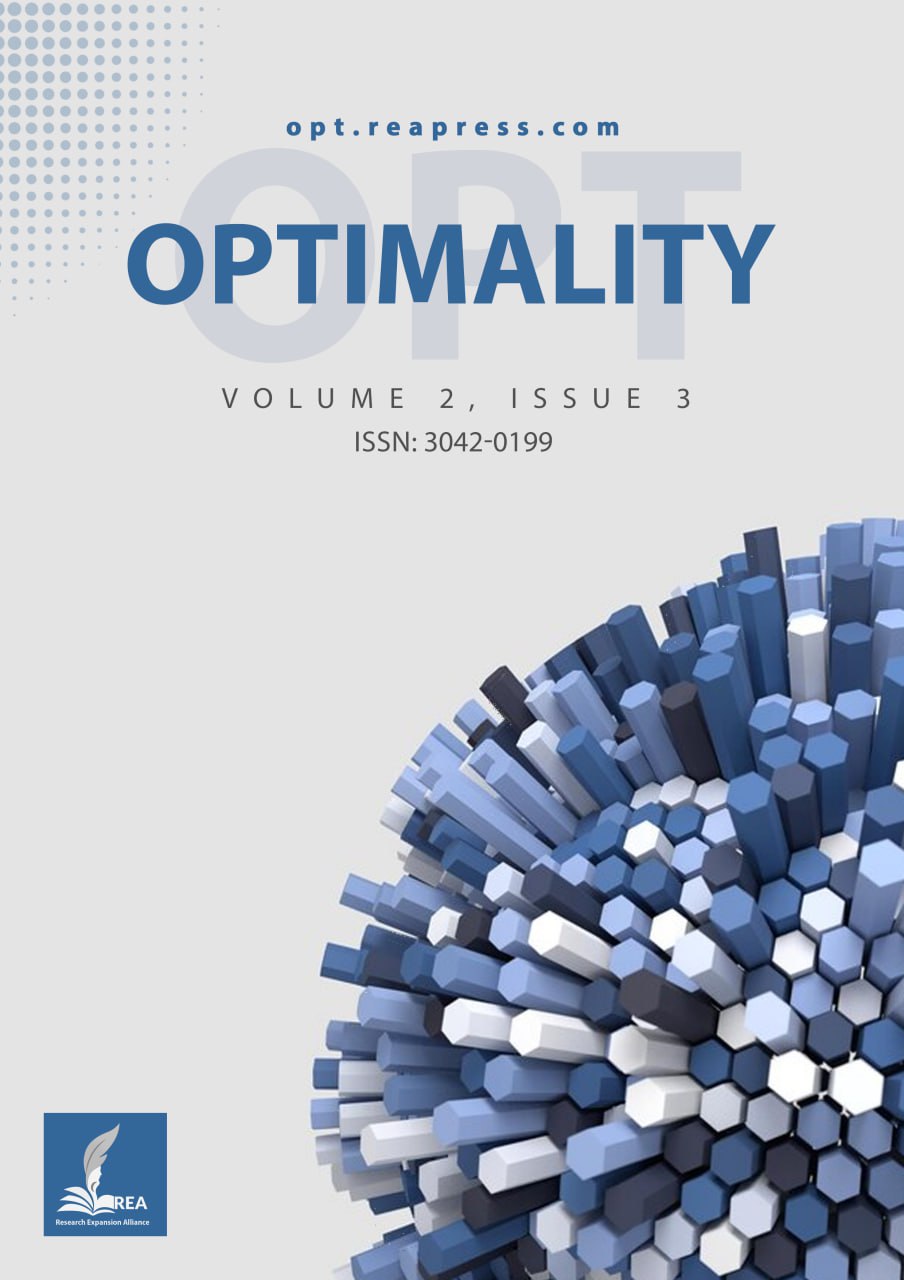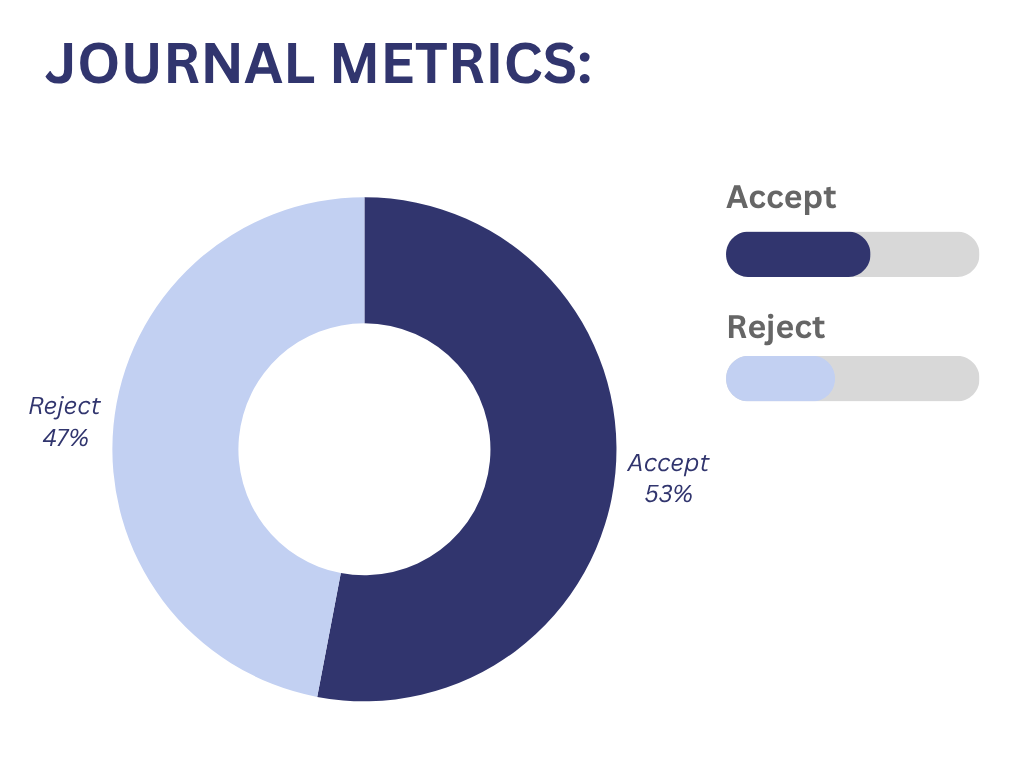Is There Infinity? Mathematics, Physics, and Philosophy at Their Crossroads
Abstract
Since it is at the centre of important philosophical, physical, and mathematical issues, the notion of infinity has attracted interest and caused controversy for millennia. Focusing on its formal existence in mathematics, its debatable presence in physical reality, and the philosophical debates that these different approaches cause, this paper explores the complicated nature of infinity. Crossing these theoretical barriers enables us to better appreciate how the issue Does infinity exist? does not have a single solution, but rather a range of responses depending on the context of inquiry. Though basic to several fields of abstract thinking and scientific hypothesis, the notion of infinity still presents great and ongoing open questions. Most importantly, This paper presents a brief review of important unsolved issues about infinity appearing in the several but connected fields of mathematics, physics, and philosophy. From the ambiguous nature of the continuum of numbers in mathematics to the contradictions of cosmological models in physics and the ongoing discussion about the reality of actual infinities in philosophy, the infinite keeps pushing the limits of human knowledge and the systems we use to understand the world.
Keywords:
Infinity, Mathematics, Physics, Philosophy, Existence, RealityReferences
- [1] Gagné, R. (2021). Cosmography and the idea of hyperborea in ancient Greece: A philology of worlds. Cambridge University Press. https://B2n.ir/ub8581
- [2] Sanders, S. (2020). Reverse formalism 16. Synthese, 197(2), 497–544. https://doi.org/10.1007/s11229-017-1322-2
- [3] León, A. (2024). Physicists blind faith in infinity. The general science journal link. https://B2n.ir/gy3632
- [4] Livadas, S. (2020). Is there an ontology of infinity? Foundations of science, 25(3), 519–540. https://doi.org/10.1007/s10699-020-09669-x
- [5] Gamrot, W. (2025). A critique of Moore’s intellectual property theory: W. Gamrot. The journal of value inquiry, 1–23. https://doi.org/10.1007/s10790-025-10041-0
- [6] Jaeger, L. (2022). Mathematics becomes paradoxical—Georg Cantor and the insurmountable contradictions of the infinite. In The stumbling progress of 20th century science: How crises and great minds have shaped our modern world (pp. 41–59). Springer. https://doi.org/10.1007/978-3-031-09618-1_3
- [7] Seban, P. (2023). From Zeno ad infinitum: Iterative reasonings in early Greek Philosophy. Rhizomata, 11(1), 33–54. https://doi.org/10.1515/rhiz-2023-0002
- [8] León, A. (2023). Infinity put to the test, self edition in KDP. https://www.amazon.com/Infinity-put-test-revolution-mathematics/dp/B0D6KJPL29
- [9] Russell, B. (2020). Principles of mathematics. Routledge. https://doi.org/10.4324/9780203822586
- [10] Russell, B., & Potter, M. (2022). Introduction to mathematical philosophy. Routledge. https://doi.org/10.4324/9781003308881
- [11] Posy, C. J. (2020). Mathematical intuitionism. Cambridge University Press. https://doi.org/10.1017/9781108674485
- [12] Hamkins, J. D. (2021). Lectures on the philosophy of mathematics. MIT Press. https://B2n.ir/pn3614
- [13] Kragh, H. (2021). Cosmology and controversy: The historical development of two theories of the universe. Princeton University Press. https://B2n.ir/ze8722
- [14] Loke, A. (2022). The teleological and Kalam cosmological arguments revisited. Springer Nature. https://doi.org/10.1007/978-3-030-94403-2
- [15] Guth, A. H. (2023). The inflationary universe. In cosmology (pp. 411–446). CRC Press. https://www.taylorfrancis.com/chapters/edit/10.1201/9781003418047-36/inflationary-universe-alan-guth
- [16] Pawitan, Y., & Lee, Y. (2024). Philosophies, Puzzles and Paradoxes: A Statistician’s Search for Truth. Chapman and Hall/CRC. https://B2n.ir/jk5923
- [17] Pawitan, Y., & Lee, Y. (2024). Philosophies, puzzles and paradoxes: A statistician’s search for truth. Chapman and Hall/CRC. https://doi.org/10.1201/9781003341659
- [18] Bolotin, A. (2024). The holographic principle comes from finiteness of the universe’s geometry. Entropy, 26(7), 604. https://doi.org/10.3390/e26070604
- [19] Vincent, J. (2022). Beyond measure: The hidden history of measurement. Faber & Faber. https://www.amazon.com/Beyond-Measure-History-Measurement-Constants/dp/1324035854.
- [20] Vopěnka, P. (2022). New infinitary mathematics. Charles University in Prague, Karolinum Press. https://B2n.ir/wf5595
- [21] Zarepour, M. S. (2020). Avicenna on mathematical infinity. Archiv für geschichte der philosophie, 102(3), 379–425. http://dx.doi.org/10.1515/agph-2017-0032
- [22] Weyl, H. (2021). Philosophy of mathematics and natural science. Princeton University Press. https://B2n.ir/md2132
- [23] Kanamori, A. (2020). Cantor and continuity. In The history of continua. philosophical and mathematical perspectives (pp. 219–254). Oxford academic. https://doi.org/10.1093/oso/9780198809647.003.0010
- [24] Mageed, I. A. (In Press). The persistent mysteries: Foundational and philosophical problems with infinity in science and mathematics, 2–8. https://doi.org/10.20944/preprints202506.0455.v1
- [25] Gödel, K., & Hahn, H. (2025). Mathematical logic in Vienna. Springer. https://doi.org/10.1007/978-3-031-81691-8
- [26] Stefanović, N. (2023). The ZFC analogue of the Halpern-Levy theorem. https://arxiv.org/pdf/2311.00191
- [27] Barker, S. F. (2020). Induction and hypothesis: A study of the logic of confirmation. Cornell University Press. https://B2n.ir/tx2253
- [28] Incurvati, L. (2020). Conceptions of set and the foundations of mathematics. Cambridge University Press. https://doi.org/10.1017/9781108596961
- [29] Adlam, E. (2022). Watching the clocks: Interpreting the page-wootters formalism and the internal quantum reference frame programme. Foundations of physics, 52(5), 99. https://doi.org/10.1007/s10701-022-00620-7
- [30] Clark, G., & Stone, R. B. (1946). The man who tapped the secrets of the universe. University of Science and Philosophy. https://physicallyimmortal.com/gift/ManWhoTappedUni.pdf
- [31] Bambi, C. (2023). Regular black holes. Springer. https://doi.org/10.1007/978-981-99-1596-5
- [32] Cecotti, S. (2023). Introduction to string theory. Springer Nature. https://B2n.ir/fj1609
- [33] Peebles, P. J. E. (2020). Cosmology’s century: An inside history of our modern understanding of the universe. Princeton University Press. https://www.torrossa.com/en/resources/an/5622931
- [34] Friederich, S. (2021). Multiverse theories: A philosophical perspective. Cambridge University Press. https://www.torrossa.com/en/resources/an/5622931
- [35] Capecchi, D. (2024). The principle of inertia in the history of classical mechanics. Foundations of science, 29(4), 1029–1070. https://doi.org/10.1007/s10699-023-09902-3
- [36] Waszek, D. (2023). Signs as a theme in the philosophy of mathematical practice. In Handbook of the history and philosophy of mathematical practice (pp. 1–31). Springer. https://doi.org/10.1007/978-3-030-19071-2_66-1
- [37] Djidjian, R. (2023). History of formalism: From aristotle to Gödel. Noema, 22(1), 9–18. https://www.ceeol.com/search/article-detail?id=1321673
- [38] Dewar, N., Linnemann, N., & Read, J. (2022). The epistemology of spacetime. Philosophy compass, 17(4), e12821. https://doi.org/10.1111/phc3.12821
- [39] Mageed, I. A., & Kouvatsos, D. D. (2021). The impact of information geometry on the analysis of the stable M/G/1 queue manifold. Proceedings of the 10th international conference on operations research and enterprise systems (ICORES 2021) (pp. 153-160). https://doi.org/10.5220/00102068015301
- [40] Mageed, I. A., & Bhat, A. H. (2022). Generalized Z-entropy (Gze) and fractal dimensions. Applied Mathematics & Information Sciences, 16(5), 829–834. http://dx.doi.org/10.18576/amis/160517
- [41] Mageed, I. A., & Mohamed, M. (2023). Chromatin can speak fractals: A review. FoLS pgr symposium 2023 (pp. 1–3). University Of Brad Ford. https://B2n.ir/gz7560
- [42] Mageed, I. A. (2023). Fractal dimension (d f) of Ismail’s fourth entropy (h iv( q, a 1, a 2,.., a k)) with fractal applications to algorithms, haptics, and transportation. 2023 international conference on computer and applications (ICCA) (pp. 1–6). IEEE. https://doi.org/10.1109/ICCA59364.2023.10401780
- [43] Mageed, I. A., & Zhang, Q. (2022). An introductory survey of entropy applications to information theory, queuing theory, engineering, computer science, and statistical mechanics. 2022 27th international conference on automation and computing (ICAC) (pp. 1–6). IEEE. https://doi.org/10.1109/ICAC55051.2022.9911077
- [44] Mageed, I. A., & Zhang, K. Q. (2022). Information geometry? exercises de styles. Electronic journal of computer science and information technology, 8(1), 9–14. https://doi.org/10.52650/ejcsit.v8i1.121
- [45] Mageed, I. A., & Zhang, Q. (2023). Formalism of the rényian maximum entropy (RMF) of the stable M/G/1 queue with geometric mean (GeoM) and shifted geometric mean (SGeoM) constraints with potential geom applications to wireless sensor networks (WSNs). Electronic journal of computer science and information technology, 9(1), 31–40. https://doi.org/10.52650/ejcsit.v9i1.143
- [46] Mageed, I. A. (2024). The fractal dimension theory of Ismail’s third entropy with fractal applications to cubesat technologies and education. Complexity analysis and applications, 1(1), 66–78. https://doi.org/10.48314/caa.v1i1.31
- [47] Mageed, I. A. (In Press). Fractal dimension of the generalized z-entropy of the rényian formalism of stable queue with some potential applications of fractal dimension to big data analytics, 1–12. https://doi.org/10.20944/preprints202401.2038.v1
- [48] Mageed, I. A. (2024). Fractal dimension (Df) theory of Ismail’s entropy (IE) with potential Df applications to structural engineering. Journal of intelligent communication, 3(2), 111–123. https://doi.org/10.54963/jic.v3i2.258
- [49] Mageed, I. A. (2024). Entropy-based feature selection with applications to industrial internet of things (IoT) and breast cancer prediction. Big data and computing visions, 4(3), 170–179. https://doi.org/10.22105/bdcv.2024.479315.1203
- [50] Mageed, I. A. (2024). Entropic imprints on bioinformatics. Big data and computing visions, 4(4), 245–256. https://doi.org/10.22105/bdcv.2024.479239.1201
- [51] Mageed, I. A. (2024). On the shoulders of the three giants information theory, semi-group theory, and uncertain reasoning with information-theoretic applications to human computer interaction. Uncertainty discourse and applications, 1(2), 258–270. https://doi.org/10.48313/uda.v1i2.46
- [52] Mageed, I. A. (2024). On the Rényi Entropy functional, Tsallis distributions and Lévy stable distributions with entropic applications to machine learning. Soft computing fusion with applications, 1(2), 90–101. https://doi.org/10.22105/scfa.v1i2.33
- [53] Mageed, I. A. (2024). Towards an info-geometric theory of the analysis of non-time dependent queueing systems. Risk assessment and management decisions, 1(1), 154–197. https://doi.org/10.48314/ramd.v1i1.47
- [54] Mageed, I. A. (2024). Ismail’s threshold theory to master perplexity AI. Management analytics and social insights, 1(2), 223–234. https://doi.org/10.22105/kfyyze86
- [55] Mageed, I. A. (In Press). On the Kullback-Leibler divergence formalism (Kldf) of the stable Mg1 queue manifold, its information geometric structure and its matrix exponential. https://B2n.ir/jr9422
- [56] Mageed, I. A. (2024). Information geometric analysis of the dynamics of transient m/m/∞ queue manifold. Systemic analytics, 2(2), 335–372. https://doi.org/10.31181/sa22202433
- [57] Mageed, I. A., & Li, H. (In Press).The golden ticket: Searching the impossible fractal geometrical parallels to solve the millennium, P vs. NP open problem. https://doi.org/10.20944/preprints202506.0119.v1
- [58] Mageed, I. A. (In Press). Fractals across the cosmos: From microscopic life to galactic structures. https://doi.org/10.20944/preprints202506.0037.v1
- [59] Ali, A., Anam, S., & Ahmed, M. M. (2023). Shannon entropy in artificial intelligence and its applications based on information theory. Journal of applied and emerging sciences, 13(1), 9–17. http://journal.buitms.edu.pk/j/index.php/bj/article/viewFile/549/398
- [60] Luo, G., Ezerman, M. F., Grassl, M., & Ling, S. (2023). Constructing quantum error-correcting codes that require a variable amount of entanglement. Quantum information processing, 23(1), 4. https://doi.org/10.1007/s11128-023-04211-x
- [61] Stone, J. V. (2024). Information theory: A tutorial introduction to the principles and applications of information theory. Packt Publishing Ltd. https://B2n.ir/mg5225
- [62] Golding, J. (In Press). The lure of infinity. Mathematics in school, 1–6. https://discovery.ucl.ac.uk/id/eprint/10115318/3/Golding_The lure of infinity.pdf
- [63] Ding, H. Y., Lu, H. Z., Xu, Y. C., & Tong, M. S. (2023). A modified mandelbrot fractal antenna with multi-band characteristics. 2023 IEEE international symposium on antennas and propagation and usnc-ursi radio science meeting (USNC-URSI) (pp. 383–384). IEEE. https://doi.org/10.1109/USNC-URSI52151.2023.10237767
- [64] Akhmet, M., Fen, M. O., & Alejaily, E. M. (2020). Dynamics with chaos and fractals (Vol. 380). Springer. https://discovery.ucl.ac.uk/id/eprint/10115318/3/Golding_The lure of infinity.pdf
- [65] Amari, S., & Matsuda, T. (2024). Information geometry of Wasserstein statistics on shapes and affine deformations. Information geometry, 7(2), 285–309. https://doi.org/10.1007/s41884-024-00139-y
- [66] Mageed, I. A. (In Press). The unfolding dialectic: A comparative analysis of human and artificial intelligence, its open challenges, and future prospects. https://www.preprints.org/frontend/manuscript/15fcfe1ab0830f01ec42dc343435559c/download_pub
- [67] Del Centina, A., & Gimigliano, A. (2025). Projective Geometry 1870-1930 and Beyond. In From here to infinity: Tracing the origin and development of projective geometry (pp. 693–755). Springer. https://doi.org/10.1007/978-3-031-72585-2_12
- [68] Rioul, O. (2021). This is it: A primer on shannon’s entropy and information. Information theory: Poincaré seminar 2018 (pp. 49–86). Springer. https://doi.org/10.1007/978-3-030-81480-9_2
- [69] Ishkuvatov, R., Musatov, D., & Shen, A. (2023). Approximating Kolmogorov complexity. Computability, 12(3), 283–297. https://doi.org/10.3233/COM-200302
- [70] Pan, S. J. (2020). Transfer learning. Learning, 21, 1–2. https://B2n.ir/zp3663
- [71] Meedeniya, D. (2023). Deep learning: A beginners’ guide. Chapman and Hall/CRC. https://doi.org/10.1201/9781003390824
- [72] Carp, T. N. (In Press). Naming the stars: Neurodivergence, mythopoetics, and the multi galactic architecture of infinite communion. MDPI. https://doi.org/10.20944/preprints202505.1871.v1
- [73] Polyanskiy, Y., & Wu, Y. (2025). Information theory: From coding to learning. Cambridge university press. https://B2n.ir/kn1383
- [74] Schuster, G. (2024). Machine learning methods in geoscience. Society of Exploration Geophysicists. https://doi.org/10.1190/1.978



